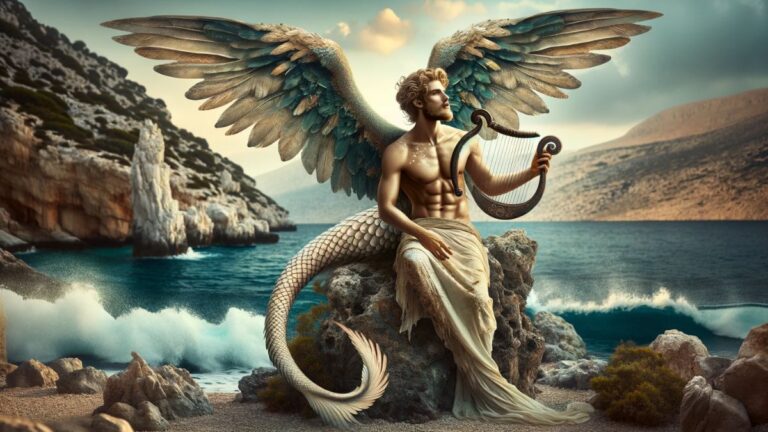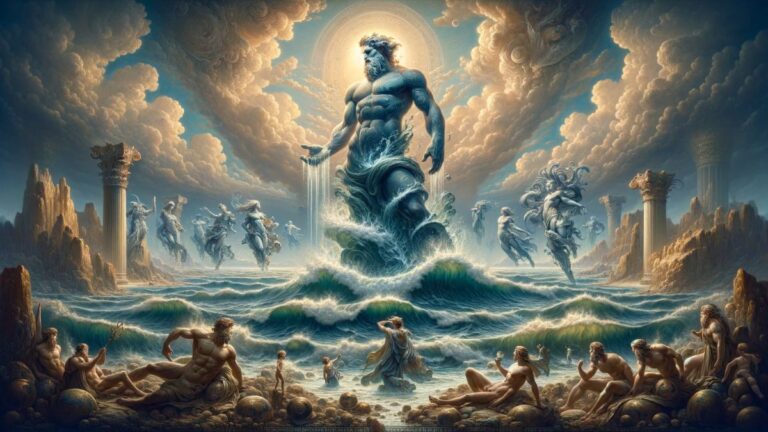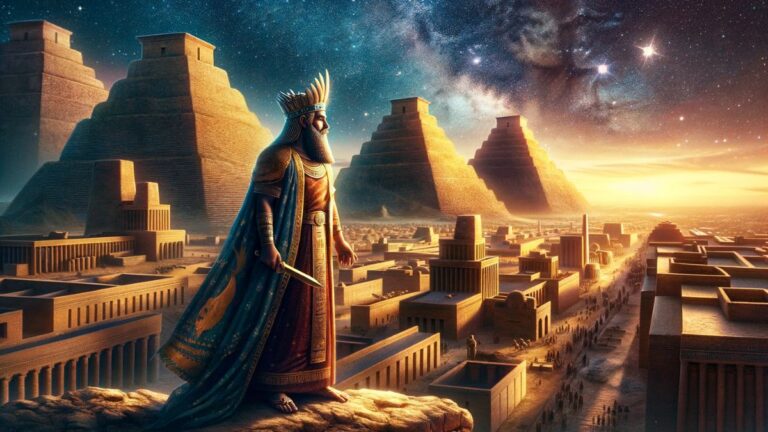50 Enchanting Facts About Ghosts: Unveiling the Mysteries of the Spirit World

Ghosts have always sparked our curiosity and fear, weaving into the tapestry of our collective stories and beliefs. From chilling tales whispered around campfires to age-old legends, the idea of spirits lingering beyond death fascinates us. In ’50 Enchanting Facts About Ghosts: Unveiling the Mysteries of the Spirit World’, we delve into these spectral mysteries. Here, you’ll find a blend of historical accounts, cultural beliefs, and curious incidents that shed light on the enigmatic world of ghosts. Let’s embark on this ghostly journey, uncovering one intriguing fact at a time.
1. Ancient Ghost Stories
Ancient civilizations were no strangers to ghost stories. The Egyptians, Greeks, and Romans all had tales of spirits. These stories often served as moral lessons, warning the living to lead righteous lives to avoid a disturbed afterlife.
2. The First Ghost Story
The earliest known ghost story comes from the 1st century A.D., written by Pliny the Younger. It’s a tale of a haunted house in Athens, where a ghostly, chain-clanking old man appeared, leading to the discovery of his unburied bones.
3. Ghosts in Shakespeare’s Plays
William Shakespeare often used ghosts in his plays. In ‘Hamlet’, the ghost of Hamlet’s father plays a crucial role, revealing the truth about his murder. It shows how ghosts were used to advance plots and add dramatic effect.
4. The White Lady Ghost
The ‘White Lady’ is a common type of ghost in many cultures. Typically associated with tragedy or heartbreak, these female spirits are often seen in long white dresses, mourning or seeking vengeance.
5. Ghosts and the Day of the Dead
In Mexico, the Day of the Dead is a celebration where families welcome back the souls of their deceased relatives for a brief reunion. This shows a different, more positive view of spirits, unlike the fear they often evoke.
6. Electronic Voice Phenomena (EVP)
EVP involves capturing ghostly voices on electronic devices. Some believe these are communications from beyond, while skeptics attribute them to radio interference or auditory pareidolia (hearing sounds in random noises).
7. Ghost Hunting Equipment
Ghost hunters use various tools, like EMF meters, digital recorders, and infrared cameras. They believe these devices can detect ghostly presence, though there’s no scientific proof of their effectiveness.
8. Famous Haunted Locations
Places like the Tower of London, the Stanley Hotel, and the Winchester Mystery House are famous for their ghostly residents. Tourists flock to these spots, drawn by the tales of hauntings and eerie occurrences.
9. Ghosts in Photography
Since the 19th century, photography has been used to supposedly capture images of ghosts. Many such photos have been debunked as hoaxes or misinterpretations of light and shadow.
10. The Ghost Ship Phenomenon
Ghost ships, like the Flying Dutchman, are legendary. These are ships seen sailing without a crew, often considered an omen of doom. They’re a blend of maritime lore and ghostly legend.
11. Poltergeists
Poltergeists are known for causing physical disturbances, like moving objects or making noises. The name comes from German, meaning ‘noisy ghost’. These phenomena are often linked to specific individuals, especially adolescents.
12. Ghosts and Temperature Drops
Many report a sudden drop in temperature during ghostly encounters. This cold spot phenomenon is a staple in ghost stories, often used as an indicator of a spectral presence.
13. Sleep Paralysis and Ghosts
Sleep paralysis can involve hallucinations of figures or ghosts when waking up or falling asleep. This state, where the body is immobile but the mind is conscious, can be terrifying and often linked to ghostly experiences.
14. The Bell Witch Legend
The Bell Witch is a famous American ghost story from Tennessee. The spirit, alleged to be that of a former neighbor, haunted and tormented the Bell family in the early 19th century, becoming one of the most notorious ghost tales in the US.
15. Ghosts in Folklore
Almost every culture has its own ghost stories and folklore. These tales reflect societal fears and values, often used to explain the unexplainable or instill moral values in listeners.
16. Ghosts and Animals
Some believe that animals, especially dogs and cats, can sense ghosts. There are countless stories of pets reacting to unseen presences, barking or hissing at empty spaces.
17. The Science of Ghosts
While there’s no scientific evidence proving the existence of ghosts, researchers in parapsychology explore these phenomena. They study experiences and reports of ghosts, trying to understand the unknown.
18. Ghosts in Popular Culture
Ghosts are a popular theme in movies, books, and TV shows. From horror films to friendly ghost stories, they continue to captivate our imagination and reflect our fascination with the afterlife.
19. The Enfield Poltergeist
The Enfield Poltergeist is one of the most documented ghost stories in England. In the late 1970s, a family in Enfield reported disturbing events, like furniture moving and knocking sounds, believed to be caused by a poltergeist.
20. Ghosts and Historical Traumas
Many ghost stories are linked to historical traumas, like battles or disasters. These tales often serve as reminders of the past, with ghosts representing unresolved issues or suffering.
21. Ghost Tours
Ghost tours are popular in many cities, where guides take tourists to reputedly haunted locations. These tours blend history, legend, and entertainment, offering a thrilling experience for those intrigued by the paranormal.
22. Ghosts in Dreams
Dreams about ghosts can be symbolic, often representing unresolved issues or fears. They can also be comforting, as some believe dreams are a way for deceased loved ones to communicate.
23. Ghosts and Energy
Some theories suggest ghosts are forms of energy that remain after death. This energy is thought to be capable of interacting with the physical world, though this remains a topic of debate and speculation.
24. The Canterville Ghost
‘The Canterville Ghost’ by Oscar Wilde is a notable ghost story that combines humor with the supernatural. This tale pokes fun at traditional ghost stories while exploring themes of forgiveness and redemption.
25. Children and Ghosts
Children are often reported to see or interact with ghosts. Some believe this is due to their open-mindedness or sensitivity to the supernatural, though skeptics attribute it to active imaginations.
26. Ghosts and Religion
Ghosts have different meanings in various religions. In some beliefs, they are seen as lost souls needing help, while in others, they are considered harmful spirits to be avoided.
27. Phantom Armies
Historical accounts sometimes mention phantom armies, ghostly soldiers seen on ancient battlefields. These sightings are often linked to significant historical events or anniversaries of battles.
28. The Brown Lady of Raynham Hall
The Brown Lady of Raynham Hall is one of the most famous ghost photographs. Captured in 1936, it supposedly shows a ghost descending a staircase, adding to the legend of this haunted English mansion.
29. Ghosts in Literature
Ghosts have been a common theme in literature for centuries. From Gothic novels to modern horror, authors use ghosts to explore themes of death, the unknown, and the human psyche.
30. Ghosts and Mental Health
The experience of seeing ghosts can sometimes be linked to mental health issues like schizophrenia or hallucinations. It’s important to consider psychological explanations in discussions of ghost sightings.
31. The Haunting of Hill House
‘The Haunting of Hill House’ by Shirley Jackson is a classic in ghost story literature. Its depiction of a haunted house and psychological horror has influenced many works in the genre.
32. Ghosts and Superstitions
Superstitions about ghosts are widespread. From not walking under ladders to avoiding black cats, these beliefs often involve avoiding actions that could attract malevolent spirits.
33. The Amityville Haunting
The Amityville haunting is a famous ghost story in New York. After a family was murdered in the house, the next residents reported terrifying phenomena, leading to books and movies on the haunting.
34. Ghosts and Cultural Differences
Different cultures have varied interpretations of ghosts. In some, they are respected ancestors, while in others, they are feared spirits. These differences reflect diverse beliefs about death and the afterlife.
35. Ghost Ships in Literature
Ghost ships, like the Flying Dutchman, are not just maritime legends. They also appear in literature, symbolizing doom, isolation, or unattainable goals, as seen in works like Samuel Taylor Coleridge’s ‘The Rime of the Ancient Mariner’.
36. Phantom Sounds
Phantom sounds, like unexplained footsteps or knocking, are common in ghost stories. These sounds often heighten the suspense and fear in tales of haunted places.
37. Ghosts and Time Slips
Time slips, where people reportedly see scenes from the past, are sometimes linked to ghosts. These experiences, often described in places with historical significance, add to the mystery of ghost sightings.
38. Ghosts in Ancient Mythology
In ancient mythology, ghosts were often messengers or omens. These spirits could provide guidance, warnings, or serve as a link between the living and the divine or the underworld.
39. The Tower of London Ghosts
The Tower of London is renowned for its ghost stories. With a history of executions and tragedies, it’s said to be haunted by figures like Anne Boleyn and the Princes in the Tower.
40. Ghostly Encounters in Hotels
Hotels are common settings for ghostly encounters, with many claiming to have resident spirits. These ghosts are often linked to the hotel’s history, with stories of former guests or tragic events adding to the eerie atmosphere. These tales, whether true or not, enhance the mystique and allure of these historic accommodations.
41. Symbolism of Ghosts
Ghosts often symbolize unresolved issues, guilt, or fear of the unknown. In stories, they can represent a past that haunts the present, unresolved grief, or secrets coming to light.
42. Dogs and Ghosts
It’s believed dogs can see ghosts because of their heightened senses. Dogs may notice sounds, smells, or movements that humans can’t, leading to the belief they can detect supernatural presences.
43. Ghost Numbers
In mathematics, ‘ghost numbers’ are a playful term for numbers that appear as a result of a calculation error. They’re not real in the numerical sense but are a humorous nod to the idea of something mysterious appearing unexpectedly.
44. Types of Ghosts
There are various types of ghosts in folklore and paranormal studies. These include poltergeists, orbs, shadow people, and apparitions. Each type is defined by its behavior and appearance, from mischievous spirits to mere glimpses of a presence.
45. Ghosts and Haunted Objects
Some believe ghosts can attach themselves to objects, especially those with sentimental value. Haunted objects, like dolls or furniture, are said to bring paranormal activity to their surroundings.
46. Ghosts in Eastern Cultures
In Eastern cultures, ghosts often represent ancestors or spirits needing help to move on. Practices like ancestor worship show a respect and care for these spirits, differing from the fear they often evoke in Western cultures.
47. Ghosts in Technology
With advancements in technology, there are now apps and software claiming to detect ghosts. While these tools are popular for entertainment, their scientific validity is highly debated.
48. Ghosts and Energy Fields
Some theories propose that ghosts are manifestations of energy fields. This idea suggests that emotions or events can leave an energy imprint, which might be perceived as a ghost.
49. Ghost Stories for Children
Ghost stories for children often feature friendly or mischievous spirits. These tales, less scary and more whimsical, introduce the concept of ghosts in a more approachable, less frightening way.
50. Ghosts and Historical Sites
Historical sites are often the settings for ghost stories. These locations, steeped in history, provide the perfect backdrop for tales of lingering spirits, adding a layer of intrigue and mystery to our understanding of the past.






